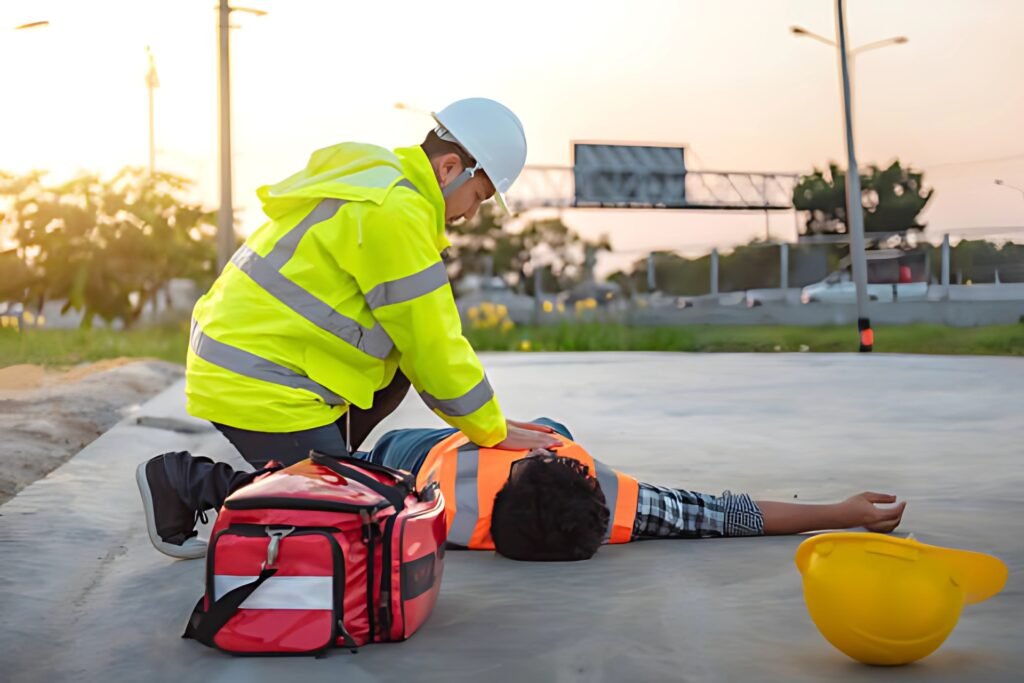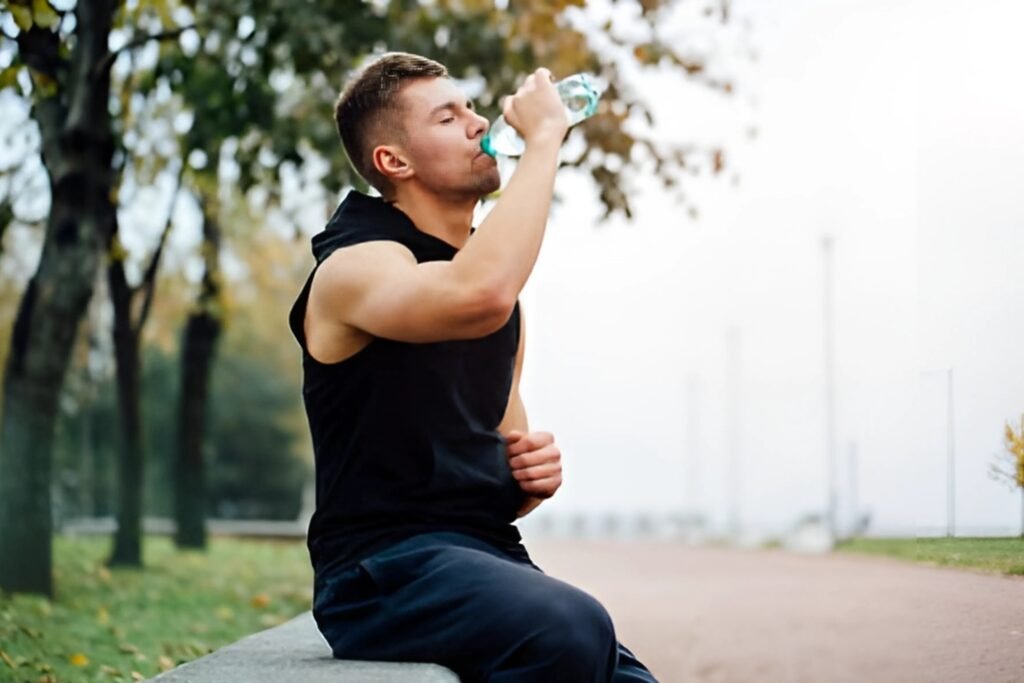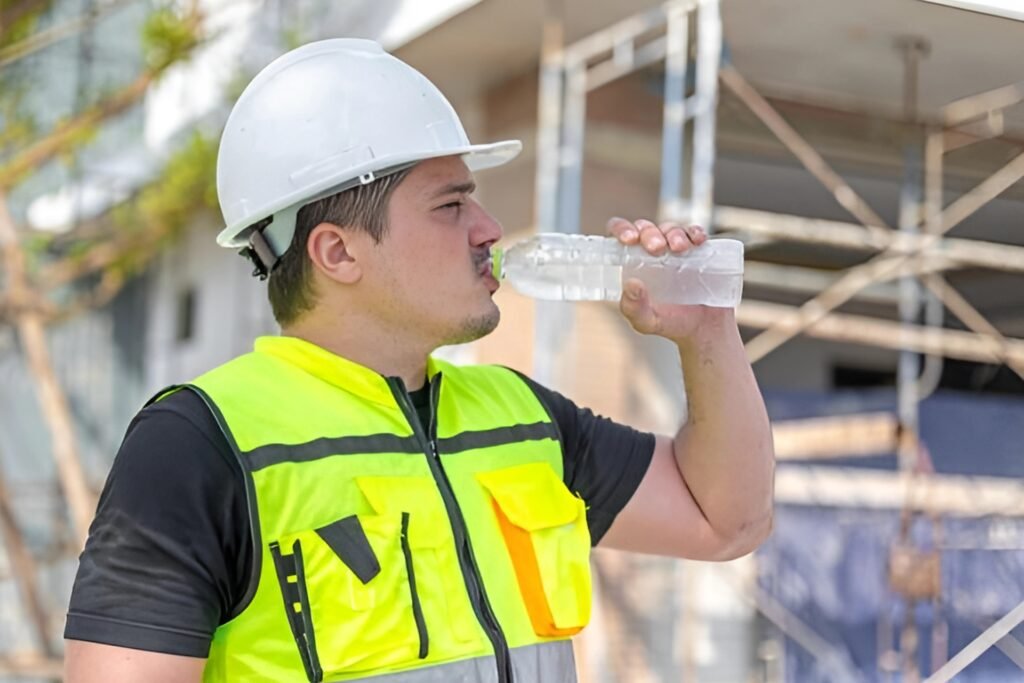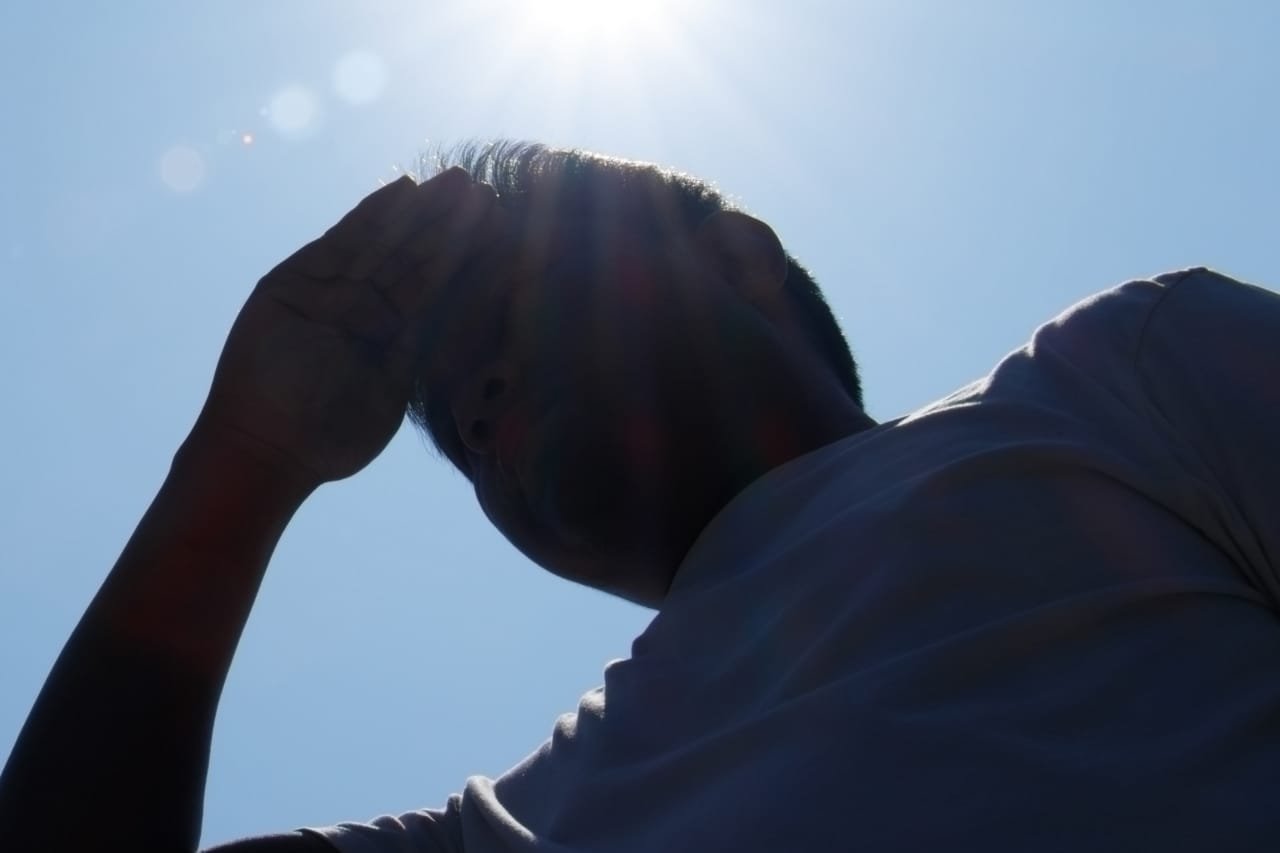- Home
- ScienceDiscover the latest updates from across the United States, including politics, culture, economy, and trending stories. Stay informed on the key events shaping the nation and the topics everyone’s talking about.
- EconomyOur Economy page provides comprehensive reporting on international financial systems, trade dynamics, development economics, and macroeconomic policy. Drawing on expert analysis and institutional data, we illuminate the interconnected nature of global markets and their real-world implications for governance and inequality.
- HealthWe examine global health issues through the lens of policy, access, equity, and innovation. From pandemics and healthcare infrastructure to mental health and biotechnological breakthroughs, our health reporting is rooted in empirical data, expert insight, and a commitment to understanding health as a cornerstone of human development.
- HistoryThis section revisits critical junctures in world history, emphasizing the relevance of historical events in shaping present-day global affairs. Through scholarly narratives and fact-anchored storytelling, we uncover the often-overlooked patterns, power structures, and human decisions that have left a lasting imprint on international relations and societies.
- PoliticsOur Politics section offers in-depth analysis of international political developments, ideological movements, and institutional shifts. With a focus on global governance, diplomacy, and geopolitical strategy, we provide nuanced reporting that transcends partisan narratives and situates events within their broader historical and structural contexts.
- War & ConflictThis section delivers meticulous coverage of international conflicts, civil wars, military strategies, and peace negotiations. We prioritize geopolitical context, long-term impact, and the role of state and non-state actors—eschewing sensationalism in favor of sober, historically informed analysis.
- TechnologyWe critically examine the global technology landscape—from artificial intelligence and cybersecurity to digital policy and ethical innovation. Our reporting focuses not just on what is being built, but why it matters: how technological change influences governance, economy, security, and human life on a planetary scale.
- Features
- Home
- ScienceDiscover the latest updates from across the United States, including politics, culture, economy, and trending stories. Stay informed on the key events shaping the nation and the topics everyone’s talking about.
- EconomyOur Economy page provides comprehensive reporting on international financial systems, trade dynamics, development economics, and macroeconomic policy. Drawing on expert analysis and institutional data, we illuminate the interconnected nature of global markets and their real-world implications for governance and inequality.
- HealthWe examine global health issues through the lens of policy, access, equity, and innovation. From pandemics and healthcare infrastructure to mental health and biotechnological breakthroughs, our health reporting is rooted in empirical data, expert insight, and a commitment to understanding health as a cornerstone of human development.
- HistoryThis section revisits critical junctures in world history, emphasizing the relevance of historical events in shaping present-day global affairs. Through scholarly narratives and fact-anchored storytelling, we uncover the often-overlooked patterns, power structures, and human decisions that have left a lasting imprint on international relations and societies.
- PoliticsOur Politics section offers in-depth analysis of international political developments, ideological movements, and institutional shifts. With a focus on global governance, diplomacy, and geopolitical strategy, we provide nuanced reporting that transcends partisan narratives and situates events within their broader historical and structural contexts.
- War & ConflictThis section delivers meticulous coverage of international conflicts, civil wars, military strategies, and peace negotiations. We prioritize geopolitical context, long-term impact, and the role of state and non-state actors—eschewing sensationalism in favor of sober, historically informed analysis.
- TechnologyWe critically examine the global technology landscape—from artificial intelligence and cybersecurity to digital policy and ethical innovation. Our reporting focuses not just on what is being built, but why it matters: how technological change influences governance, economy, security, and human life on a planetary scale.
- Features
Now Reading: Heat Illness and Hydration Tips for Workers & Athletes
-
01
Heat Illness and Hydration Tips for Workers & Athletes
- Home//
- Science//Discover the latest updates from across the United States, including politics, culture, economy, and trending stories. Stay informed on the key events shaping the nation and the topics everyone’s talking about.
- Economy//Our Economy page provides comprehensive reporting on international financial systems, trade dynamics, development economics, and macroeconomic policy. Drawing on expert analysis and institutional data, we illuminate the interconnected nature of global markets and their real-world implications for governance and inequality.
- Health//We examine global health issues through the lens of policy, access, equity, and innovation. From pandemics and healthcare infrastructure to mental health and biotechnological breakthroughs, our health reporting is rooted in empirical data, expert insight, and a commitment to understanding health as a cornerstone of human development.
- History//This section revisits critical junctures in world history, emphasizing the relevance of historical events in shaping present-day global affairs. Through scholarly narratives and fact-anchored storytelling, we uncover the often-overlooked patterns, power structures, and human decisions that have left a lasting imprint on international relations and societies.
- Politics//Our Politics section offers in-depth analysis of international political developments, ideological movements, and institutional shifts. With a focus on global governance, diplomacy, and geopolitical strategy, we provide nuanced reporting that transcends partisan narratives and situates events within their broader historical and structural contexts.
- War & Conflict//This section delivers meticulous coverage of international conflicts, civil wars, military strategies, and peace negotiations. We prioritize geopolitical context, long-term impact, and the role of state and non-state actors—eschewing sensationalism in favor of sober, historically informed analysis.
- Technology//We critically examine the global technology landscape—from artificial intelligence and cybersecurity to digital policy and ethical innovation. Our reporting focuses not just on what is being built, but why it matters: how technological change influences governance, economy, security, and human life on a planetary scale.
- Features//
Understanding Heat Dangers
Rising temperatures increase the risk of heat-related illnesses. People must learn practical Heat Illness and Hydration Tips now.

According to CDC, heat can cause exhaustion and heatstroke if ignored.
Older adults, outdoor workers, and athletes face higher risks during peak summer. Dehydration worsens these dangers fast.
Drinking water often and taking breaks in shade are vital Heat Illness and Hydration Tips.
WHO warns that heatwaves can increase deaths. Understanding these dangers early prevents harm.
What is Heatstroke?
Heatstroke is a serious risk many overlook when searching for Heat Illness and Hydration Tips. Knowing the signs is vital to act fast.

According to CDC, heatstroke happens when the body overheats and can’t cool down. It can cause damage fast.
Typical symptoms may include elevated body temperatures exceeding 103°F, accompanied by distinct signs such as flushed or parched skin, tachycardia, disorientation, or loss of consciousness.
Unlike heat exhaustion, heatstroke stops sweating completely. This makes it deadlier. If left untreated, heatstroke can lead to serious complications, including potential damage to vital organs such as the brain, heart, and kidneys.
If you spot heatstroke signs, act at once. Move the person to shade or indoors. To alleviate heat-related distress, remove excess clothing and apply cooling measures such as cold water or ice packs to lower body temperature.
Do not attempt to administer fluids if the individual is disoriented or unresponsive. Call emergency help immediately.
Heat exhaustion is milder than heatstroke. People with heat exhaustion still sweat. Symptoms include heavy sweating, weakness, and nausea.
Proper Heat Illness and Hydration Tips help prevent heatstroke. Drink water often and take breaks in cool places.
Athletes, outdoor workers, and seniors should be extra careful in hot months. They are at greater risk for heatstroke than others.
Stay alert to sudden weather changes. Even healthy people can face heatstroke during extreme heat.
Recognizing Heat Exhaustion
Recognizing heat exhaustion is vital when following Heat Illness and Hydration Tips. It can help prevent severe heat-related emergencies in summer.
Excessive sweating can deplete the body’s water and salt levels, triggering heat exhaustion. According to CDC, signs include heavy sweating, cold and clammy skin, nausea, dizziness, and headache. Some people may feel weak or faint.
Treating heat exhaustion at home starts with moving to a cool place. Rest and loosen tight clothes. Sip cool water slowly. Apply wet cloths to the body or take a cool shower.
Experts at MayoClinic stress drinking water or sports drinks helps replace lost fluids and electrolytes.
Do not drink caffeine or alcohol. They worsen dehydration. Stay indoors until you feel better. Rest is important for recovery.
Sometimes heat exhaustion needs urgent care. Seek medical help if symptoms last longer than one hour. If vomiting occurs or confusion appears, call emergency services.
Following Heat Illness and Hydration Tips can stop heat exhaustion from turning into heatstroke. Athletes, seniors, and outdoor workers must stay alert to symptoms.
Watch the weather and plan breaks during peak heat hours. To stay hydrated, make it a habit to drink fluids at regular intervals, regardless of whether you feel thirsty or not.
Understanding these signs early protects health during extreme temperatures. Safe hydration and smart cooling actions are life-saving. Always act fast if symptoms appear.
Other Heat Issues
Other heat issues can harm health if ignored. Knowing extra Heat Illness and Hydration Tips helps people stay safe in high temperatures.
Heat cramps are sudden, painful muscle spasms. They often hit during intense activity in hot weather. According to CDC, these cramps usually affect legs or abdomen muscles. They happen when the body loses salt through sweat.
To stop heat cramps, rest in a cool place. Sip clear fluids or a sports drink. Gently stretch and massage cramped muscles.
Heat rash is another common heat problem. It causes tiny red bumps, itching, or prickly skin. Children often get heat rash in hot, humid weather. The Mayo Clinic says blocked sweat glands cause this rash.
Prevent heat rash by wearing loose, light clothes. Stay in air-conditioned rooms when possible. Keep the skin dry and clean.
Heat can also cause dizziness. When blood vessels dilate to help regulate body temperature, it can cause a temporary drop in blood pressure, leading to feelings of lightheadedness or faintness in some individuals.
Staying hydrated and resting in shade help lower this risk. People must follow proper Heat Illness and Hydration Tips to avoid sudden dizziness during outdoor work or sports.
Knowing these smaller heat issues can prevent bigger emergencies. Stay alert for heat cramps, rash, or sudden dizziness.
Essential Hydration Strategies
Staying safe in extreme heat demands smart Heat Illness and Hydration Tips every day. Staying ahead of dehydration is key. Drinking water regularly helps regulate your body temperature and maintain fluid balance.

It’s a good idea to drink water before you feel thirsty, as recommended by health experts, to prevent dehydration and keep your body functioning smoothly.
Mayo Clinic says to avoid alcohol and caffeine, as they increase fluid loss.
Take water breaks every 20 minutes during outdoor work or sports.
Choose light meals with high water content, like fruits.
These simple Heat Illness and Hydration Tips can help prevent serious heat-related illness this summer.
Why Hydration Matters
Knowing how much to drink is a key part of smart Heat Illness and Hydration Tips for summer safety.
The CDC recommends drinking at least eight cups (64 ounces) of water daily, but this can increase depending on the heat and physical activity. People working outdoors or sweating heavily should drink more.
Drinking water consistently throughout the day helps keep your body hydrated and functioning properly. By sipping water regularly, you can maintain fluid balance and support your overall health. Small amounts often work better than big gulps at once.
Good hydration has many benefits. It keeps your body cool and supports healthy skin. Water also helps joints move smoothly.
According to Mayo Clinic, drinking enough water helps the heart pump blood easily. It also protects the kidneys and digestive system.
Proper Heat Illness and Hydration Tips reduce heat cramps, headaches, and dizziness. They help the body handle summer heat stress.
Many wonder if coffee dries the body out. Mayo Clinic says moderate coffee does not cause dehydration.
However, too much caffeine can increase urine output. Balance coffee with extra water to stay hydrated.
Choose water as your main drink. Add fruits like watermelon to meals for extra fluids.
Following trusted Heat Illness and Hydration Tips helps avoid problems like heat exhaustion.
Plan ahead for hot days. Carry a bottle and take regular water breaks.
Good hydration protects health and boosts energy. Make it a daily habit to drink smart this summer.
Choosing the Right Fluids
Choosing the right fluids is vital when following Heat Illness and Hydration Tips during long, hot summer days.
The body loses electrolytes through sweat. According to WHO, sodium, potassium, and magnesium are key electrolytes needed in summer.
Eating bananas, oranges, or drinking oral rehydration solutions helps replace these. Some sports drinks offer these minerals but check labels for sugar content.
The CDC advises sports drinks only when sweating a lot or doing heavy outdoor work. For everyday hydration, plain water is still best.
Sports drinks are not needed for short walks or indoor activity. They are helpful for athletes or workers in extreme heat.
Coconut water is another option for natural hydration. The Mayo Clinic explains coconut water has potassium and small amounts of sodium.
It works well for mild fluid replacement but does not replace medical-grade solutions in severe dehydration.
Coconut water can be a healthy choice for many, but individuals with kidney problems or those who need to limit potassium intake should consult their doctor before consuming it.
Safe Heat Illness and Hydration Tips recommend a balance. Drink plain water often. Use sports drinks or coconut water if needed.
Avoid sugary sodas or energy drinks for hydration. They do not replace lost salts and can increase dehydration.
Smart fluid choices help the body handle heat stress better.
Understanding the best fluids and electrolytes keeps you safe and healthy all summer.
Tracking Your Hydration
Tracking your hydration is a smart part of daily Heat Illness and Hydration Tips for summer health.
Dehydration shows clear signs. The CDC lists dry mouth, dizziness, and dark urine as common warning signals.
Checking urine color is a simple way to measure hydration. According to Mayo Clinic, pale yellow urine means good hydration.
If your urine is dark yellow or amber-colored, it might be a sign that you need to drink more fluids to stay properly hydrated.
So, check your urine color daily, especially during heat waves. It is an easy habit that can help prevent heat stress.
Knowing how much water you really need helps too. The WHO suggests adults drink about eight cups daily, but this changes with age, weight, and activity.
A good hydration guideline is to drink half your body weight in ounces of water daily. As a general guideline, a person weighing 150 pounds might aim to drink roughly 75 ounces of water daily, calculated by dividing their weight in half.
People who sweat more need extra. Athletes and outdoor workers should drink small amounts often instead of large gulps at once.
Following these Heat Illness and Hydration Tips keeps you safe when temperatures rise.
Carry a water bottle and set reminders if you forget to drink. Incorporate fruits and veggies with high water content, like watermelon, cucumbers, and celery, to help boost your hydration and add essential nutrients to your diet.
Tracking hydration helps avoid heat cramps and exhaustion.
Good daily habits make a big difference. Watch for signs, check urine color, and know your daily goal.
These simple steps protect your health all summer long.
Tips for Vulnerable Groups
Older adults, outdoor workers, athletes, and people with chronic illness face serious heat risks each summer. This guide offers practical Heat Illness and Hydration Tips to help protect them during extreme temperatures.

Seniors and Heat
Elderly people are more prone to heat exhaustion and heatstroke. The CDC warns that age reduces the body’s ability to adjust to sudden temperature shifts. Medications for heart disease or high blood pressure can worsen dehydration. Mayo Clinic experts note diuretics and beta blockers raise heat sensitivity. Seniors should drink fluids regularly, even without feeling thirsty. Light, breathable clothing and cool indoor spaces lower risk.
Outdoor Worker Safety
Outdoor workers risk heat illness daily. OSHA reports that thousands face heatstroke every year while working in agriculture, construction, and delivery jobs. Employers should provide shaded breaks and cool drinking water. According to OSHA, workers should drink water every 15-20 minutes to stay hydrated, especially in hot environments. Additionally, using a cooling vest can help lower body temperature and reduce heat stress during peak hours. The National Institute for Occupational Safety and Health (NIOSH) stresses the need for heat safety training(CDC NIOSH).
Athletes in Heat
Exercising in high temperatures raises dehydration and heat exhaustion risks. The American College of Sports Medicine advises athletes to acclimatize gradually to hotter conditions (ACSM). Drinking fluids before, during, and after workouts helps maintain hydration levels, supports performance, and aids in recovery. Electrolyte drinks can replace lost salts. Mayo Clinic warns that plain water alone may not be enough during prolonged intense exercise. Monitoring urine color helps track hydration status. Light yellow suggests good hydration.
Chronic Illness & Heat
People with chronic conditions like diabetes or heart disease must take extra care in extreme heat. The American Heart Association explains that heart disease affects how the body handles heat, raising the chance of dehydration (AHA). Diabetics lose more fluids through high blood sugar, which can worsen dehydration. WHO highlights that chronic illness can reduce the body’s ability to sweat properly, increasing heatstroke risks. Patients should check medication side effects and stay cool indoors during heat waves.
Prevention & Emergency
Staying safe in extreme heat requires a combination of practical steps, like staying hydrated and taking breaks, and awareness of heat-related risks and symptoms. These Heat Illness and Hydration Tips help you plan, dress smartly, and know when to get help.
Best Ways to Stay Cool in Summer
Staying cool is key to preventing heat-related illnesses like heat exhaustion and heatstroke. Take steps to keep your body temperature down, especially during hot weather or intense physical activity. The CDC advises staying indoors during peak afternoon heat. Use fans or air conditioning when possible. Drink water often, even if you’re not thirsty. Take cool showers to reduce body temperature. The The American Red Cross recommends avoiding heavy meals and alcohol during heatwaves, as they can exacerbate dehydration and increase the risk of heat-related illnesses.
Create a Heat Safety Plan
Planning ahead saves lives. If you don’t have air conditioning, identify cool places like public libraries, shopping malls, or community centers where you can escape the heat and stay cool. The Mayo Clinic advises checking the forecast and staying updated on heat advisories. Plan outdoor tasks early in the morning or late evening. Tell family where you are if you work outdoors alone. Keep emergency contacts ready.
Best Clothing for Hot Weather
Lightweight, loose-fitting clothes help your body stay cool. The WHO recommends wearing light-colored clothes that reflect sunlight. Avoid dark colors, which absorb more heat. Wearing a hat with a wide brim can provide excellent protection for your face, neck, and ears from the sun’s harsh rays, reducing the risk of sunburn and heat-related issues. Sunglasses and sunscreen prevent sunburn, which worsens dehydration.
When Is Heat Exhaustion an Emergency?
Heat exhaustion can become deadly fast. According to the CDC, heat exhaustion turns serious when you feel dizzy, confused, or faint. If symptoms persist after resting and drinking fluids, seek medical help immediately. Rapid heartbeat, heavy sweating, or nausea that won’t stop signal an emergency.
Emergency Signs of Heatstroke
Heatstroke needs urgent medical care. According to the Mayo Clinic, signs of heatstroke include a body temperature above 103°F, confusion or altered mental state, rapid pulse, and potentially even loss of consciousness. Get medical help right away if you or someone else shows symptoms of heatstroke. Stop all activity. Move the person to shade or indoors. Use cool water or ice packs while waiting for help.




























